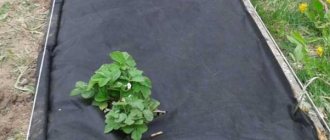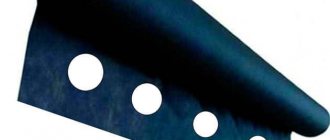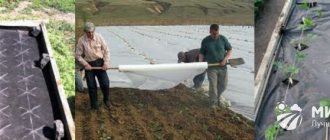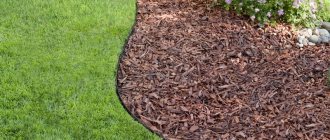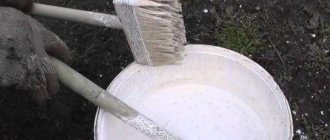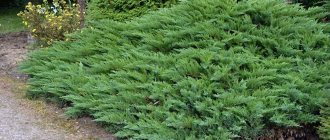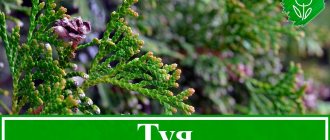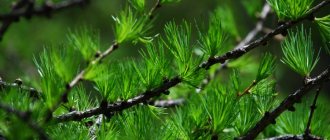Experienced summer residents share recommendations on choosing the right material.
It has long been proven that plants protected from adverse factors develop faster. If the owners of a suburban area want to get a large harvest of berries, vegetables, and herbs several weeks earlier, they need to use special covering materials.
Our readers ask how to select and use such materials.
Mouse1 FORUMHOUSE user
Please tell me if you have ever used (I don’t know what it’s called correctly) material to protect against weeds. Is it true that it allows water and sunlight to pass through? The family has a small child and time is running out, it’s a pity to start strawberries.
There are a lot of similar questions. We studied this topic and decided to share advice from experienced gardeners and summer residents on the correct choice of covering materials.
Purpose
Protective materials are used to shelter plants from adverse external influences. Innovative technologies are used in their production.
This allows you to get good results when growing garden crops:
- Increase productivity.
- Accelerate the process of fruit ripening.
- Protect plants from possible frosts in the spring.
- Reduce the amount of time required to cultivate beds.
- Reduce soil moisture loss.
The soil, covered with special films, does not overheat and does not dry out. There is no need to weed the beds often. You can cover the plants completely. In this case, a frame is created on which agrofibre is stretched, or the beds are simply covered with canvas. The edges are sprinkled with earth to ensure reliable fixation.
An important function of shelter is mulching. The soil can be protected from rapid loss of moisture and the development of weeds. Cover the beds with film, making holes in appropriate places. Seeds or seedlings are planted in them.
Application in different periods
In the spring, covering protects plants from frost, acting as insulation. Vegetables and greens develop faster as the soil and air under the film become warmer.
During the warm period, the soil can overheat and quickly lose moisture. The film will protect plants from drought, heavy rain with hail, and gusty winds. Non-woven agrofibre will protect the crop from pests. Watering and loosening the soil will need to be done less frequently.
In autumn, the film will protect plants planted in the ground at the end of summer. This is important for remontant varieties of berries, herbs and some vegetables.
Films are also used in winter. They are used to create shelter especially for heat-loving crops. They will not be afraid of frost, lack of snow on the ground surface, or strong winds. Experienced gardeners cover strawberries, onions, grapes, young trees and shrubs, and some types of perennial flowers.
Varieties
All covering materials are made from polymers under high pressure and temperature. They differ in density, structure and additional properties. All subspecies can be divided into two large groups:
- Polyethylene film. It can be transparent or cloudy. Films are used to cover the frame under which tomatoes, strawberries, and peppers are grown. Onions and garlic, as well as root vegetables, grow well under such cover.
- Non-woven agrofibre. This type of shelter is also called agrofabric or spunbond. The polymer is not only melted, but also passed through dies. The result is continuous threads or fibers. They are fastened into a fabric with impregnation or stitched with a needle. These are soft and lightweight types of shelters. They can be laid directly on plants without a frame. Shrubs are wrapped in non-woven materials for the winter and used for mulching the soil.
It is important to know the advantages and disadvantages of the presented shelters.
Solving the problem of grass growth on crushed stone and gravel paths
In practice, eliminating the growth of weeds in a dacha or garden is an impossible idea. Fallen leaves and soil found on gravel and crushed stone paths, one way or another, become the basis for grass germination. However, proper care will ensure a neat appearance for your garden space. It is enough to remove the foliage in time with a fan rake or a garden vacuum cleaner. And treat germinating grass, for example, with Roundup and Tornado, without waiting for it to gain growth.
Material for crushed stone
Advantages and disadvantages of film
Summer residents often use films in their gardens. This group of shelters is characterized by the following advantages:
- Protects from frost and frost.
- Excellent light transmission.
- They are inexpensive, so they are used over large areas.
- Do not release heat from the shelter.
The disadvantages of polyethylene films are:
- Can only be used on arches. The material is quite heavy, so you cannot lay it directly on the plants.
- They do not allow water to pass through. Watering plants requires more effort and time.
- The beds are periodically ventilated so that the temperature does not rise to a critical level. Otherwise, the plants will die.
- Strong winds wear out the film on the edges of the frame.
- Condensation accumulates on internal surfaces, which can cause diseases on plants.
- The films sag under the weight of sediment.
- The service life does not exceed one season.
Folk ways to eradicate grass
Among summer residents and gardeners, improvised means of controlling weeds are very popular. For example, boiling water, burning with fire using a blowtorch, and watering weeds with a solution of water and vodka are widely used. To destroy grass between paving slabs, spray with a mixture of vinegar (200 g), salt (20 g) and water (600 g).
Grass tends to grow much faster than cultivated plants. Closed beds will look quite aesthetically pleasing. And flower beds covered with tree bark or walnut husks will add zest to the landscape design of the site. You can cover the soil to prevent grass from growing using almost any available means. The main thing is that they do not allow light to pass through, but allow the soil to breathe and maintain water permeability.
Rarely a summer resident will allow weeds to grow on his site. Experienced vegetable growers and gardeners know that weeds have no benefit, but a lot of harm. Weeds take nutrition and moisture from crops, releasing toxic substances into the ground. All summer residents try to get rid of “uninvited guests” on their property by weeding their beds and flower beds throughout the summer. However, the weeds do not give up and appear again after each weeding. It is especially difficult to combat perennial weeds that reproduce by rhizomes, creeping shoots or multi-layered root suckers. Previously, such “infection” was removed from the site using black plastic film, cardboard sheets, old floor coverings and other materials that did not allow sunlight to pass through. Now manufacturers of goods intended for gardening are offering summer residents the use of non-woven weed covering material that is capable of allowing air and water to pass through, but blocking the sun's rays.
Advantages and disadvantages of agrofibre
Agrofabric is characterized by a wide range of applications. It has a number of positive qualities:
- Durability. When used correctly, agrofabric does not lose its original qualities for 5-6 years.
- The fiber weighs little. It will not break the stems of even tender seedlings.
- Two pieces can be sewn by increasing the width of the fabric.
- It allows moisture and air to pass through, which prevents water from stagnating and condensation forming.
- When mulching, it prevents weeds from growing in the beds.
- Watering is carried out without removing the material. This greatly simplifies the care of garden crops.
Agrofabric has much fewer disadvantages. These include the following:
- The cost is higher than that of film. But given the service life, agrofibre is cheaper.
- When sewing the edges, it will not be possible to achieve uniformity of the fabrics.
Non-woven covers are used in the cultivation of almost all garden plants. When choosing a suitable canvas, a number of parameters are taken into account.
Density
Our regular reader Egenii asks: “The soil is heavy plasticine black soil. It was virgin land last year, now it has partially rotted over the winter, turned over with a plow, and plowed several times with a walk-behind tractor. Actually, the question arose of how to plant so that weeds do not attack the plants. Krasnodar region, it’s hot at times...if you take a thick covering 60 and mulch with straw, will it do any good or will the plants die?”
One of the important parameters of agrofibre and film is their density. Based on this criterion, the following groups of paintings are distinguished:
- 14-17 g/m². Used for direct placement on plants. Low density makes the canvas light. As they grow, the shoots are raised and covered. Agrofabric and film with this density are used in low beds. The edges must be weighted so that the flooring does not blow off the wind.
- 20-42 g/m². This is a universal, most common type of film, agrofabric. It is used in the construction of greenhouses on steel arches or rods. Vegetable seedlings and flowers develop well under such shelter. The density is high enough to withstand wind and rain.
- 43-60 g/m². This is a cover for full-fledged greenhouses used throughout the entire gardening season. The harvest is protected from birds, spring frosts, and overheating in summer. Winter crops are covered with thick canvases. The material of this group is suitable for heat-loving plants.
- Over 60 g/m². These are the densest and heaviest films. They are used for mulching beds. Dense varieties create a greenhouse effect on the ground. The soil warms up faster and becomes suitable for planting a couple of weeks earlier. Shoots pass through the holes. To do this, cross-shaped or round slits are made in the canvas.
TOP 8 popular options for covering soil from weeds
- Agrofibre.Almost every gardener has heard positive feedback from the use of agrofibre on the site. But not everyone clearly understands what it is. The technology for creating agrofibre is called spunbond, so this very word can now be heard as a reprimand for everything dark that covers the soil. The agrofibre itself has a special texture, where rounded depressions are clearly visible, reminiscent of holes. The main honesty of the canvas is its density. It can be as minimal as 17 g/sq.m. or maximum – 60 g/sq.m. Remember, maximum density is suitable for weed control, because it will not only last longer, but is also guaranteed to perform the desired function on the site. Most often, agrofibre is used on strawberries, abundantly covering the area between the bushes. Experts assure that the durability of such fiber is 3-4 years, which is exactly how long strawberries bear fruit, and then they need to be replanted. The main mistake of novice gardeners is the rapid deterioration of fiber. It is strictly forbidden to walk on agrofibre, as it is not intended for such purposes. Conclusion, you can fill the planting area with agrofibre, but for the paths you should choose a more durable material that can withstand mechanical tests.
- Agrofabric.In essence, agrofabric is the same agrofibre, but has a more durable surface and a longer service life. Agrofabric is not afraid of mechanical use, so you can easily walk on it, because the service life of such non-woven material is up to 12 years. Accordingly, the pricing policy is much higher compared to fiber. Everyone will benefit from what suits them - a super dense fabric or a more budget-friendly fiber. You can combine fiber with fabric in an attempt to save a lot of money. So, for example, a strawberry plantation. It is recommended to cover the row spacing with agro-fabric to make harvesting comfortable, but cover the rest of the area with agro-fibre.
- Geotextiles. Another popular non-woven material for grass protection can be considered black geotextiles. It, in fact, performs all the functions for which nonwoven materials are valued, but has its own strengths. Thus, its density is one and a half times higher than agrofibre and is 90 g/sq.m. That is why experts put geotextiles between fiber and fabric, a kind of “golden mean” in terms of strength and price.
- Black and reinforcing film.Another black option for weed control is to use film. The black color completely blocks the sun, and the surface of the film completely blocks the access of moisture to the ground. This is definitely a plus, which effectively fights the grass, leaving no chance of survival. But at the same time, such closeness turns advantages into obvious disadvantages. Condensation collects under the film, which naturally comes out of the ground, forming drops on the film, which later causes fungal diseases. Also, the film is not durable, and you are unlikely to be able to use it for more than one season. Another thing is that if the film is reinforcing, it is a more durable option that can last more than a single season. You can safely walk on the reinforced surface of the film, but you still won’t be able to get rid of the lack of condensation.
- Mown grass.The simplest and most affordable option for mulching an area to benefit weed control is grass clippings. The ideal option would be lawn grass, which should be placed in a thick layer throughout the entire area. The grass gradually dries out under the scorching sun, turning into straw. Alternatively, you can use the very same weeds that need to be fought, but you should take into account the nuance - the presence of seeds. It is strictly forbidden to mulch with grass that blooms or has seeds. Not only will you not be able to achieve what you want in the fight against weeds, but you will also contribute to the increase in the number of weeds on your territory. Conclusion, if you decide to use grass, it is better to use lawn grass - it is clearly proven and safe. Replenishment of the layer during the season should be taken under special control, since a decrease in the ball will have a negative impact and will allow strong weeds to find their way to the sun and make their way to the surface.
- Wood chips.This option can very often be seen in flower beds, since you can not only make wood chips yourself, but also buy them. The market is diverse and can be represented by color variations that will help not only protect the area from grass, but also transform its appearance. Many experts claim that it is best to combine wood chips with black non-woven material, since such a tandem will be an unconditional bonus and will definitely cope with grass. Weeds do not grow under wood chips, it warms the soil and keeps the soil moist for a long time - the main advantages of such a covering material.
- Tree bark. An equally popular option for grass mulch is crushed tree bark. Of course, this material is purchased, so it has a very attractive appearance, which goes well with ornamental and vegetable plants, shrubs and trees. The bark performs well not only as protection against grass, but also as a transformation of the area. The size, or as the fraction is usually called, can be different - small, medium and larger. The choice of fraction should depend on the goals and plants, the base of which will be covered with such a mulch layer. The main advantage of the bark is that it does not need to be added several times a season, since the process of overheating is not fast. On average, bark mounds should be increased after 2-3 years. The optimal thickness of the bark layer is up to 7 cm. Experts also recommend using newspapers or cardboard under the bark. On the packaging with a specific type of bark, manufacturers indicate the ideal combination that will help not only get rid of weeds, but also pests. Do not neglect the recommendations, they will become very useful in practice.
- Gravel, crushed stone, pebbles, etc.All kinds of crushed stone mulch components are a popular variety that can protect against grass, transform and decorate the area. It is beautiful, practical, effective and durable. You can safely fill paths with this material, as well as transform flower beds, as it creates the effect of a modern landscape design, where stones of different fractions are located along with plants. All variations of gravel will help warm the soil and protect it from weeds, since single representatives, if they appear, will not last long. The ideal combination would be a combination of non-woven material and gravel. Spend time and effort once creating holes for plants and planting the desired flowers, and the final result will definitely please you. In addition to significant privileges, it should be noted that there are a number of disadvantages when using stone material. Firstly, the pricing policy, the material is not cheap. Secondly, it is not light, so it will be useful to transport it with large vehicles if the goal is to fill impressive territories. And finally, the stone gets very hot in direct sunlight, so many plants can become very overheated.
Using covering material to control weeds is a wise decision; only strict adherence to recommendations for landscaping will help bring any plans and goals to life.
Join our Facebook group
Color
Participant kler26 writes the following: “Has anyone used black agrofibre to cover the ground in garden beds to prevent weeds? I had some trouble with him. Maybe I'm doing it wrong. I only water each hole; the water washes away the soil, leaving bare roots. That's why I add soil regularly. The weed also grows under the fiber. you have to stick your hand in and somehow pull them out - it’s very inconvenient. In addition, the fiber periodically pokes out from under the ground, so you have to crawl and cover it with new ones. I thought it would be easier with him, but something turns out to be more troublesome.”
The canvases differ in color, which is also chosen in accordance with the area of application. They are suitable for the following purposes:
- Black. Used in cold regions. They attract sunlight, so the soil warms up faster. Even before planting the plants, the beds are lined with material. After 1-1.5 weeks, the soil becomes suitable for sowing.
- White. Reflects light, preventing weeds from developing. Slots are made in the canvas for plants. Shoots located above the material receive more light.
- Black and white. The canvases are white on one side and black on the other. They are spread directly onto the beds. The black side faces down. This prevents grass from growing. The white side reflects the sun's rays, preventing overheating of the soil and plants. The material is used for vegetable gardens in warm climates. You will need to water and weed the beds less often.
- Green. It is used for near-trunk decoration and for mulching the soil. Creates a beautiful landscape near the house and prevents the germination of weeds.
How to use covering material?
Mulching agrofibre refers to non-woven polypropylene materials that do not cause any harm to cultivated plants, animals or people. At the same time, agrofibre does not give any chance to weeds, which die from the lack of light, trying to break through the dense material. The density of mulching covering materials is 50-60 grams per square meter.
Scheme for using non-woven weed covering material. Cultivated plants are planted in holes made with a sharp peg. Weeds die because they don't have access to sunlight.
The method of application is as follows:
- black agrofibre is spread on the soil that has dried out after winter and prepared for planting, to prevent weeds from sprouting over the entire area of the bed;
- seedlings are planted in cross-shaped slits made in the covering fabric with a sharp peg or cutting object.
The video shows how to use non-woven covering material using the example of growing strawberries:
Recent Entries
Lilac perennials that are beautiful, compact and do not crowd out other plants Why when buying seedlings you should not take the sellers’ word for it and how to determine the age of the plant using 3 signs Tomato seedlings have turned purple or whitish: why the color has changed and how to save the plants
Other Important Features
Covering materials differ in some other features. The width of the canvas is 1.5-3.2 m. It is not recommended to connect the strips. This degrades the performance of the shelter. Therefore, it is necessary to select a roll whose width corresponds to the size of the bed. Its edges should protrude 10 cm beyond the treated area. They are sprinkled with soil or pressed down with logs.
Some films and agrofabrics have reinforcement. This is a rigid lattice mesh that increases the service life of the material. It prevents the fabric from quickly rubbing, which is especially important when stretching it onto the frame. Reinforced fabrics are used in regions where strong winds blow.
The covering material may have an ultraviolet stabilizer. Such varieties are marked “SUF”. If the amount of sunlight in the region is insufficient for the growth of certain types of crops, this variety is used. The film converts light into infrared rays, which affect the sprouts longer and more gently. Even in the evening, crops receive sufficient light.
How to cover the soil to stop grass growth
Weeds significantly complicate the cultivation of fruits and vegetables. It is recommended to cover the ground with covering material in order to grow crops.
- Use an opaque material to prevent grass from growing. Cardboard, black film, and roofing felt are suitable for covering. You can also lay boards, cover them with agrofibre or crushed stone.
- Cover with 5-10 cm of organic mulch. Mown green plants, sawdust, nut husks, and tree bark will perfectly cover the soil and prevent the growth of weeds.
